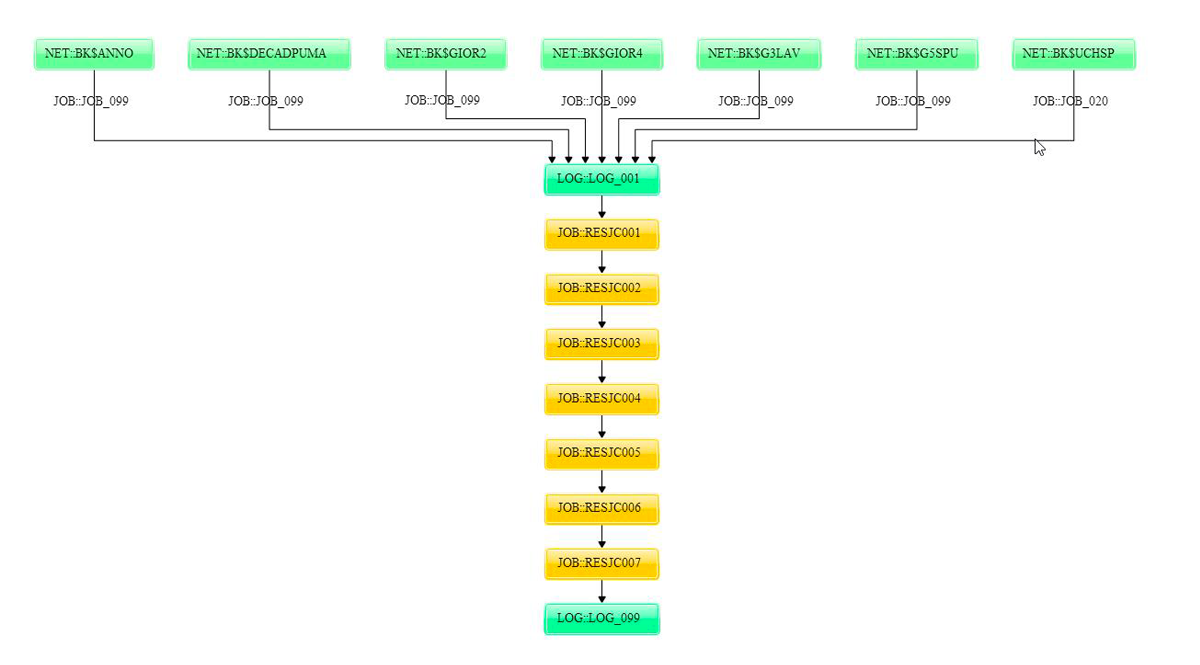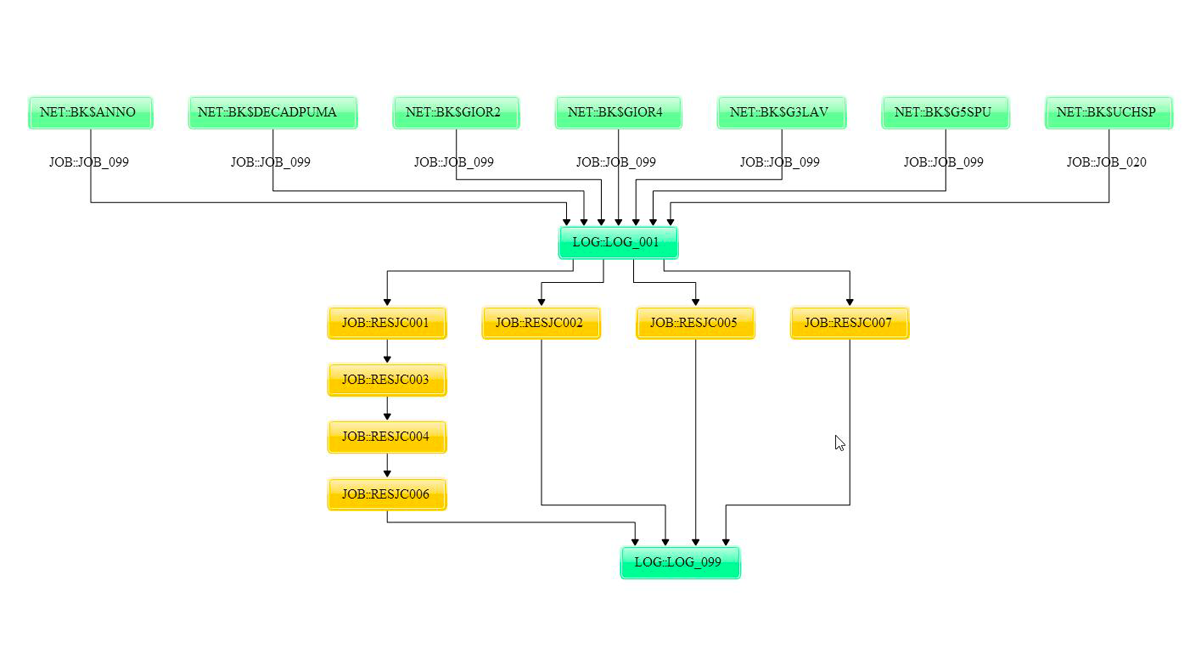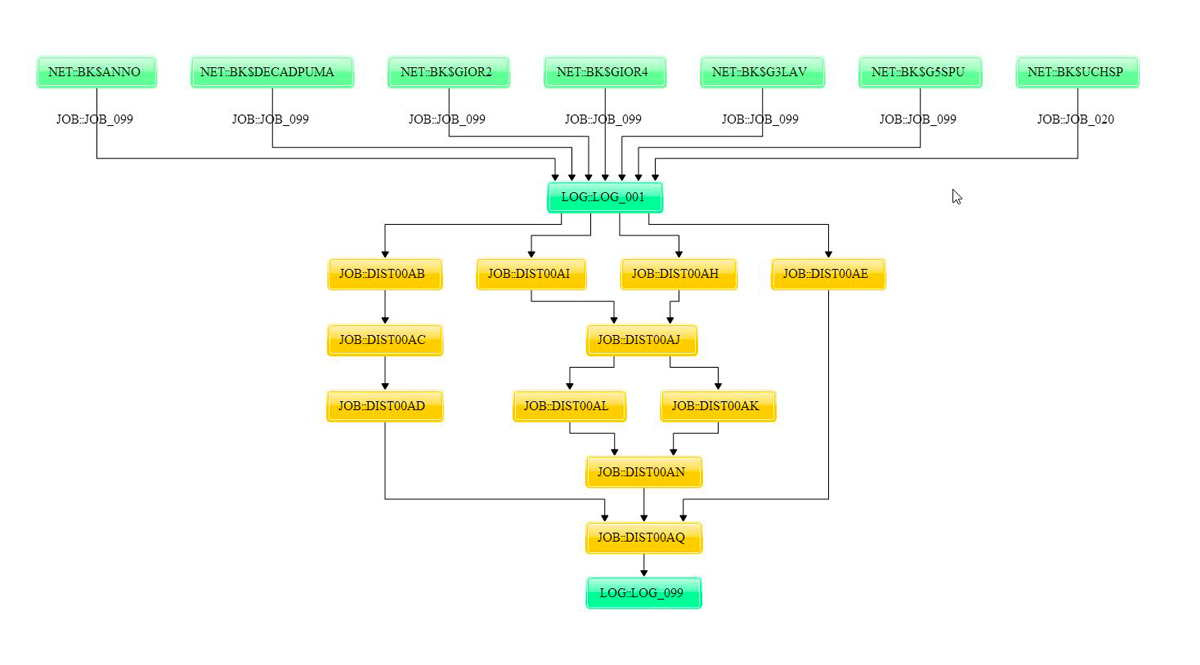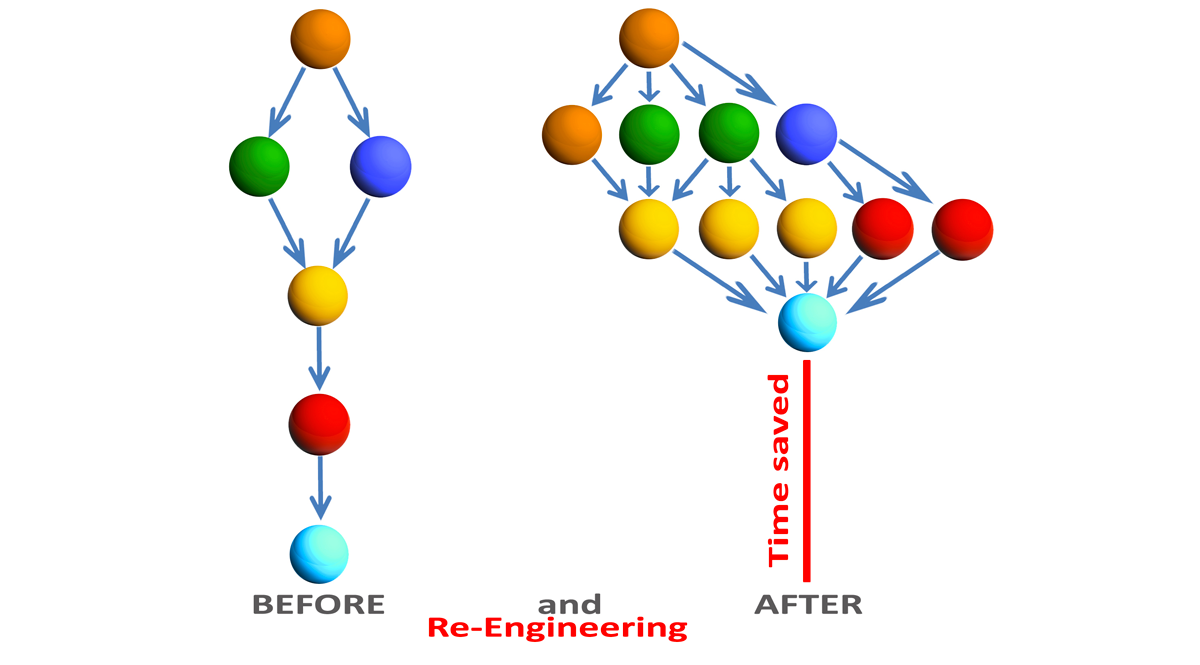RE-ENGINEERING
The design, generation and maintenance of batch Jobs and schedules is often an extremely detailed and error-prone task. There are a variety of causes: the complex process structure, the continuing need for change, the acquisition of externally developed application packages, the limited time available between the creation or modification of an application and its activation in production, the difficulty in capturing all the information about the use of resources, the complex network of links between applications.
This can result in:
- Design and generation of schedules where the processes are run in sequence versus in parallel, typically resulting in a noticeable increase of the processing time
- Redundant backup/restore activities, due to lack of information, resulting in a waste of time and resources
- Risk of incomplete backups/restores
- Non-adherence to site-specific behavioral standards
- Misuse of optimally available
There are also indirect consequences such as:
- An excessive number of links between the human resources and applications due to the large quantity of information needed to manage them
- Difficulty in the change management of objects and in the alignment between different environments, including production and development
- Difficulty with the timing of change of a variety of different kinds of objects such as programs, batch applications and JCL
A lack of knowledge of the applications makes changes difficult to manage and the actions necessary for restarts after abnormal terminations of batch procedures themselves.
THE RE-ENGINEERING SOLUTION
The RES Re-Engineering tool, thanks to its methodology and technological superiority, helps to optimize batch processes – including existing, new and/or modified processes – reducing the processing time, making them adhere to corporate standards and resulting in better reliability at the same time.
The methodology that is available to the user to perform a critical analysis of existing processes and an optimal design solution will lead to newly generated, more efficient and shorter running processes. It also promotes adherence to technical and behavioral standards in the implementation of backup/restore requirements, restart, checkpoint management, temporary files, the use and management of GDGs, the report generation process and condition code processing.
Particularly important is also the benefit in terms of logical redesign, application shutdown and isolation in logical units of processing of the key parts of the production process, among others.
The technology component then automates the enforcement activities of any client-specific standards, ensuring the automatic creation of schedules ready to be invoked by the most popular automated workload schedulers.
All tasks can be performed via an interactive interface or managed by the automated reengineering option, 1SR (One Step Re- Engineering). In the first case it is possible to perform detailed interventions, in the second case it is possible to obtain the best automation and speed of the Re-Engineering application.
There is also a version of “Easy Re-Engineering” which, applied to the generation of parallel scheduling nets, keeps the job as provided, without concern for the sequence of the steps within them.




OBJECTIVES AND FUNCTIONALITIES OF RE-ENGINEERING
The main objective is to significantly improve the quality in terms of greater adherence to standards, greater security and reliability, and performance in terms of decreased processing time and better use of resources.
Creating Jobs and schedules is a fully automated function of R -Engineering and can easily be inserted in the object change management life cycle.
Not only can existing schedules be re-engineered, but also brand new schedules can be generated (fully optimized) starting from a given list of jobs.
BENEFITS
- Automatic generation of standard schedules and jobs
- Behavioral standardization of the management of abnormal termination
- Absolute reliability of backup and restore processes
- Automatic documentation of optimized processes
- Automatic alignment of multiple production environments
- Drastic reduction in the time to move new applications into production
- Drastic reduction in response times for applications which are currently in production
- Optimization of the execution of applications for improved SLA




